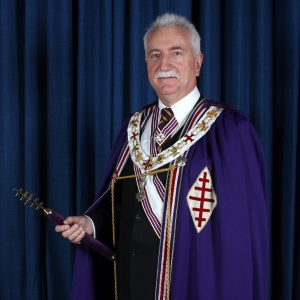
Constantine, a Roman, was destined for the college of Emperors but following the death of his father, he was hailed by the Legions in York as Augustus and became the Governor of Britain and Gaul. After several successful battles across the Alps and Italy he eventually established himself as the lawful Emperor of both the East and West and transferred the capital of the empire from Rome to Byzantium, later to be named after him.
It is said that his conversion to Christianity began one evening after a long day’s march with his army. He believed he saw a sign from heaven; a pillar of light in the form of a special cross. A standard bearing a cross was ordered to be carried before him in the wars. Several Christians in his army came forward and avowed their faith, following which Constantine directed that they should wear on their armour a red cross. Having been successful in battle it is said that Constantine with the help of his chief bishop, Eusebius, opened a Conclave of the Knights of the Order whose members became the bodyguard of their Sovereign.
It seems likely that the Order of the Red Cross of Constantine was being worked in England by 1780. After a number of changes to the organisation, the earliest documented date of the Order in its present form is 1865.
THE CEREMONIES
This Christian Order is in two parts. The first ceremony consists of the Candidate’s admission, obligation, and then the Installation as a Knight-Companion of the Red Cross of Constantine, in which the historical basis of the Order is also detailed.
In separate ceremonies the Knight-Companion builds on what he has already been taught and in the ceremony of the Knights of the Holy Sepulchre and St. John the Evangelist this knowledge is further expanded and the ultimate aims of Freemasonry are revealed. These, together with the two Installation ceremonies leading to the principal Chairs in the Red Cross of Constantine, are undoubtedly among the most impressive ceremonies in the whole of Freemasonry.

Red Cross of Constantine
There are no articles in this category. If subcategories display on this page, they may have articles.